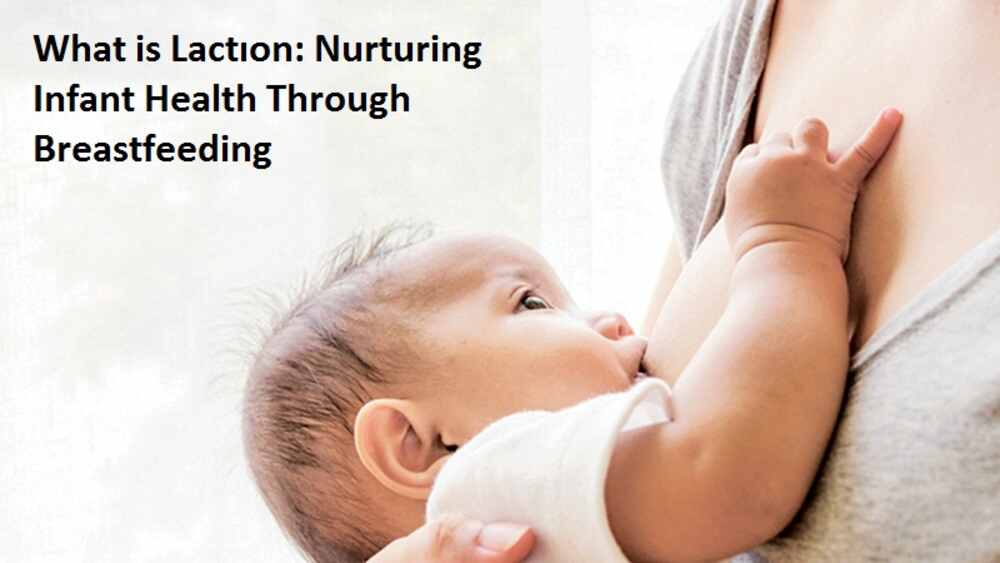
What is Lactıon?
Breastfeeding is a natural miracle that allows mothers to provide their babies with ideal nutrition and establish a strong foundation for their health and well-being. This comprehensive guide will delve deep into the world of lactıon, exploring its intricate processes, numerous benefits, common challenges, and practical solutions. By gaining a thorough understanding of lactıon and equipping yourself with valuable insights, you can embark on a successful and fulfilling breastfeeding journey.
How Lactıon Works and Its Process
- Breastfeeding begins with a fundamental understanding of breast anatomy. The breast is composed of milk ducts, lobules, the areola, and the nipple, all of which play a vital role in milk production and nourishing your baby.
- The hormonal dance that regulates lactıon involves estrogen, progesterone, prolactin, and oxytocin. These hormones undergo dynamic changes during pregnancy, childbirth, and postpartum, ultimately initiating lactıon.
- The remarkable process of how nutrients travel from the mother’s bloodstream into breast tissue to create breast milk is facilitated by the hormones prolactin and oxytocin. The milk ejection reflex ensures a smooth flow of milk to the baby.
- Breast milk is a nutritional masterpiece, consisting of macronutrients (fats, carbohydrates, and protein), micronutrients (vitamins and minerals), and immunologic elements like antibodies and probiotics. Additionally, a mother’s diet influences the nutritional content of her breast milk.
- Breast milk isn’t static; it evolves as your baby grows. The difference between foremilk and hindmilk showcases how breast milk adapts to meet your baby’s changing nutritional needs.
The Far-Reaching Influence of Breastfeeding on Infant Health
- Breast milk offers the ideal balance of macronutrients and boasts excellent micronutrient bioavailability. It reduces the risk of nutritional deficiencies and provides optimal nutrition for infants, surpassing the benefits of infant formula.
- Breastfeeding provides your baby with a robust immune system, protecting against infections, asthma, allergies, and Sudden Infant Death Syndrome (SIDS). The long-term disease risk reduction for both mother and baby is an additional advantage of breastfeeding.
- Beyond nutrition, breastfeeding fosters emotional bonds between mother and baby. Skin-to-skin contact and the release of oxytocin create a nurturing and comforting environment for the infant.
- Breast milk’s convenience cannot be underestimated. It is always ready, at the right temperature, and eliminates the need for formula preparation and sterilization of bottles.
- Breastfeeding is not just beneficial for infants; it also offers numerous advantages for mothers. It aids in postpartum weight loss, reduces the risk of certain cancers, and contributes to overall well-being.
Common Challenges and Solutions for Successful Breastfeeding
- Breastfeeding, though natural, can come with challenges. Sore nipples are a common concern, but proper latching techniques, the use of creams and hydrogel pads, and seeking guidance from lactation consultants can address this issue.
- Engorgement, another challenge, can be managed through techniques like massage, warm compresses, and frequent feeding.
- Blocked milk flow can lead to painful conditions like mastitis. Warm compresses, massage, and antibiotics are effective solutions for managing plugged ducts and mastitis.
- Insufficient milk supply can be challenging, but strategies such as increasing pumping frequency, using massage, and seeking professional support can help increase production.
- Latching issues can arise due to various factors, but adjusting holds and using nipple shields can significantly improve the latching experience.
- For working mothers, going back to work or school can be a significant transition. Scheduling pumping sessions, proper milk storage, and maintaining the breastfeeding bond are important aspects to consider during this time.
Also read: What is Bertėjas
Pumping and Storing Breast Milk
- Breast pumps come in various types, from manual to electric. Understanding the differences between them, including single vs. double pumping and open vs. closed systems, can help mothers find the right fit.
- Effective pumping techniques, such as breast massage, visual and tactile stimulation, and finding the proper flange size, can maximize milk production.
- Working mothers can maintain their milk supply by following a pumping schedule that balances their professional and breastfeeding responsibilities.
- Proper milk storage is essential to preserve the quality and safety of breast milk. Understanding container types, recommended temperatures, shelf life, and guidelines for avoiding contamination is crucial.
- Thawing and warming stored milk should be done safely, using methods like the warm water bath, while avoiding microwaving.
- For mothers on the move, insulated cooler bags and ice packs can be used to transport pumped milk safely and prevent spills.
- If a mother has surplus milk, selling or donating it can be a generous choice. Understanding the advantages and the process required is important for those considering this option.
Learning About Weaning: Timing, Change, and Emotional Help
The weaning process varies for each mother and baby. Understanding when and how to begin, considering unique circumstances, is crucial for a smooth transition.
Gradual weaning approaches, such as replacing feedings with formula or solid foods and eliminating one feeding session at a time, can ease the transition for both mother and baby.
Weaning can be an emotional time for both mother and baby. Maintaining bonding through cuddling, reading, playing, and other comforting activities can help ease the emotional impact of weaning.
Also read: What is Pulsamento
Balancing Breastfeeding and Daily Life: Tips for New Moms
Breast milk is adequate for the first six months of life, providing optimal nutrition for infants.
To balance breastfeeding with daily life, creating a supportive environment, prioritizing self-care, learning about expressing milk, establishing a routine, and educating your support network are important steps to take.
Conclusion
Breastfeeding is a remarkable journey that offers countless benefits to both mothers and infants. By embracing lactıon, mothers provide their babies with a gift that nurtures health, strengthens bonds, and fosters lifelong well-being. With the right information, support, and practical strategies, the challenges of breastfeeding can be overcome, and the rewards can be enjoyed. Make informed choices about breastfeeding, considering the wealth of resources available for breastfeeding support and information.
Frequently Asked Questions (FAQs) on Lactation
Q1: What is lactation? A: Lactation is the natural process of producing breast milk to nourish an infant.
Q2: When does lactation begin? A: Lactation typically begins during pregnancy, but milk production increases significantly after childbirth.
Q3: How can I increase my milk supply? A: To boost milk production, ensure proper hydration, frequent breastfeeding, a balanced diet, and adequate rest.
Q4: Is breastfeeding painful? A: While some discomfort is common in the early stages, breastfeeding should not be painful. Seek help from a lactation consultant if you experience pain.
Q5: How often should I breastfeed my baby? A: Newborns often feed every 2-3 hours, and as they grow, the time between feedings may extend.
Q6: Can I breastfeed if I return to work? A: Yes, many working mothers successfully breastfeed by pumping and storing breast milk for their infants.
Q7: What foods should I avoid while breastfeeding? A: Avoid excessive caffeine, alcohol, and certain medications. Consult with a healthcare provider for guidance.
Breastfeeding is a natural process that provides optimal nutrition and numerous benefits for infants and mothers alike. Understanding the intricacies of lactıon, recognizing and addressing common challenges, and finding a balance between breastfeeding and daily life are key components of a successful breastfeeding journey. Embrace the wonders of lactıon, and provide your baby with the gift of health and well-being through breastfeeding.
If you found our content helpful, don’t forget to share it on your social media platforms. Follow – https://freeadshare.com for More Updates


